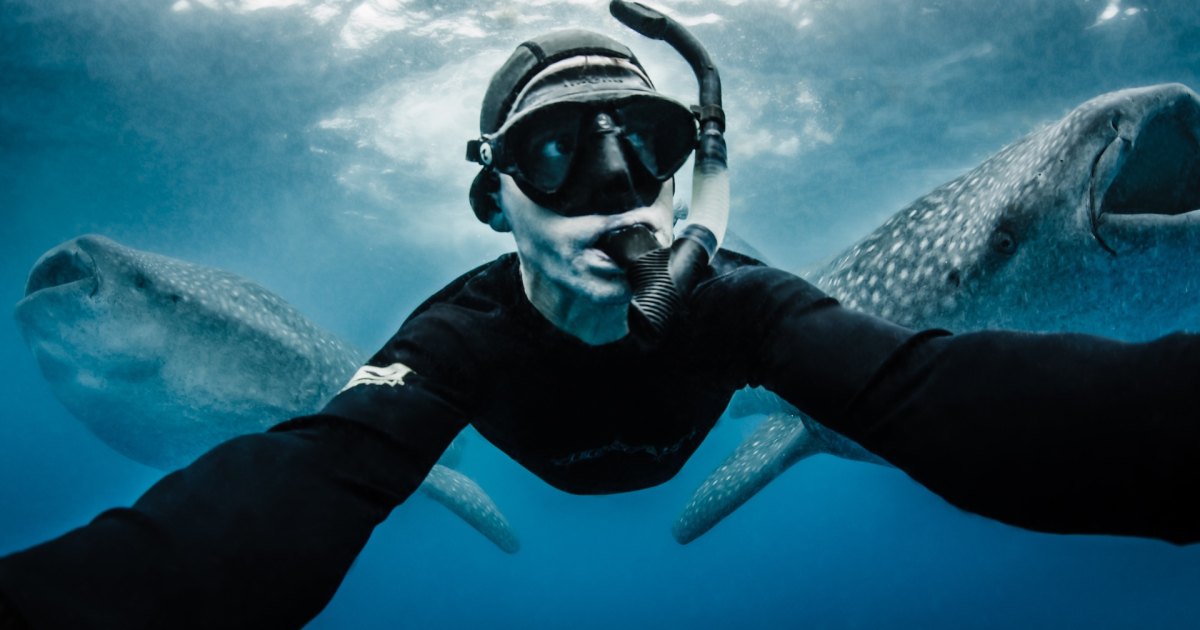No products in the cart.
Fitness Tips
The Photographer Who Risks His Life To Save Our Oceans
On the beach of Manta, Ecuador, photographer Shawn Heinrichs pulled out his camera to shoot the grisly scene on shore. This town used to be a thriving community that made its living off fishing tuna. But the behemoth commercial industry had so overfished these waters in recent years that many of the local fishermen turned to the insidious underground shark-fin trade for income. Now, men pulled piles of dead sharks from boats onto the sand, where men wielding machetes sliced their fins like butter, painting the surf in blood and ominous destruction: every year, an estimated 100 million sharks are killed for their fins, driving them to the brink of extinction and hurling entire ocean ecosystems out of balance.
Heinrichs aimed to capture the shocking imagery needed to spur international protection of these animals. He moved closer to the carnage. Until one man whirled and held a machete to his throat, shouting at him in Spanish.
Heinrichs managed to talk his way out of getting his throat cut, but over the next 24 hours in Manta, he sheltered from bullets under a hotel room bed and fended off gang members with his camera monopod—all in service of the photos that ultimately helped to convince the Convention on International Trade in Endangered Species (CITES) to list thresher and mako sharks for protection under global treaty.

Heinrichs, an Emmy award-winning cinematographer and photographer based in Boulder, CO, admits that much of his work involves swimming in gorgeous waters to photograph whales and manta rays. But part of it involves risking his life, going undercover to the global front lines of illegal wildlife trafficking, pollution and habitat destruction, where he’s been chased by mafiosos and had hits out on his life—all in service of capturing the imagery that catalyzes people to protect the ocean’s most threatened species and habitats.
“Even though every second breath we take comes from the oceans, even though they provide us so much food, most of us don’t see or feel the immediate effects of the collapse of ocean ecosystems,” he says. “Imagery and cinematography creates that visceral connection for people. Ninety percent is showing these creatures are beautiful and vulnerable, and 10 percent is the gut punch that shows the scope of destruction.”
Ocean Conservation Through the Lens

Instead of machetes to the throat, Heinrichs, 49, could be enjoying immense wealth from a career as a technology entrepreneur right now. But over a decade ago, motivated by increasing threats to ocean ecosystems, he walked away from a luxe future and picked up a camera instead. In short order and with no formal training, he became one of the leading photographers using imagery to advocate for ocean conservation.
“I was the unlikeliest person to go do the work I do now. But I didn’t want to feel helpless in the face of a crumbling natural world,” he says. “My story can inspire others who feel helpless to do something that really matters in their lifetime.”
Thanks in part to Heinrichs’ work, CITES has expanded its listing of marine animals under protection from just whale sharks and great whites to dozens of species. As one of the co-founders of SeaLegacy, which uses art as a tool for halting the destruction of oceans, Heinrichs is currently working to enlarge the marine protected area of the Galapagos Islands to insulate it from aggressive commercial fishing, while his SeaLegacy teammates are helping the Bahamas implement its plan to protect 30 percent of its oceans by 2030.
“In the next decade, we’re going to decide the future of our planet,” he says. “We’re either going to turn a blind eye and hope someone else takes care of it, and lose it all. Or we’re going to safeguard our life support system, making wise decisions about what we consume, what we dispose of. It’s up to everyone to decide.”
For access to exclusive gear videos, celebrity interviews, and more, subscribe on YouTube!

